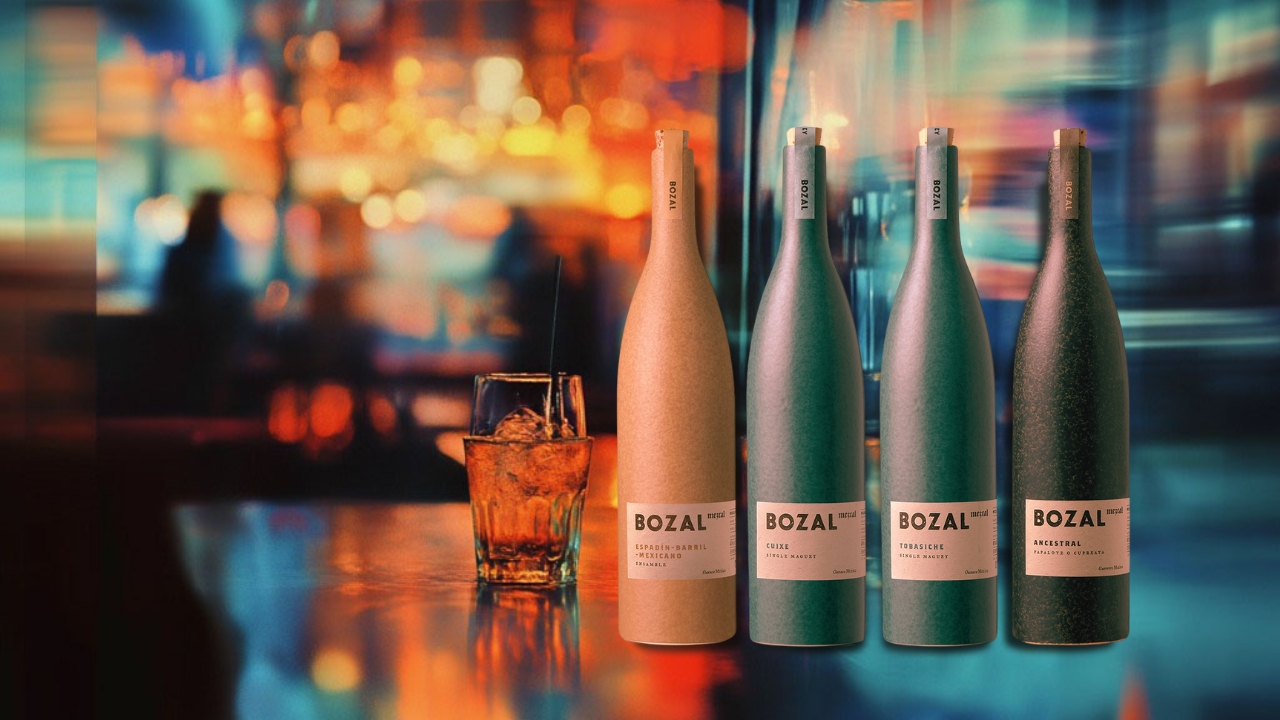Bozal Mezcal crafts its spirits from wild agave species that thrive in the uncultivated lands of Oaxaca and Guerrero, Mexico.
Numerous indigenous agave varieties grow naturally on the steep hillsides of these regions. Family-run mezcaleros, or distilleries, actively preserve traditional, untamed methods to produce small, artisanal batches.
The San Francisco-based agency, Swig, designed the bottles, drawing inspiration from the traditional ways people enjoy mezcal.
Bozal Mezcal is 100% artisanal, and the agave from this region yields intensely exotic flavors, featuring a savory smokiness and deep earth tones.
Its handcrafted quality and traditional approach make it a favorite among those seeking a premium, authentic mezcal experience.
Let us talk about the brand in greater detail.
Production Process of Bozal Mezcal
The production of Bozal Mezcal’s flavors follows a traditional process, rooted in centuries-old methods of agave extraction and fermentation:
- Agave Harvesting: The process begins with carefully extracting the agave hearts, known as “piñas,” from the Maguey plant.
- Cooking in Pit Ovens: Mezcaleros slowly cook the harvested agave hearts in conical, underground pit ovens. They line these ovens with volcanic rock, wood, and earth to enhance the smoky and earthy flavors that define traditional mezcal.
- Mashing with a Horse-Drawn Stone Wheel (Tahona): After cooking, mezcaleros mash the agave hearts using a large stone wheel, known as a “tahona,” which is pulled by a horse or mule.
- Natural Fermentation: Bozal Mezcal embraces open-air fermentation, allowing natural yeast from the environment to interact with the agave, rather than relying on industrial processes with artificial yeast.
- Distillation: Mezcaleros distill the fermented agave in small batches using copper or clay pot stills, which refine and concentrate the rich, complex flavors of the mezcal.
The natural fermentation and traditional techniques give Bozal Mezcal a clarity and depth that appeals to connoisseurs of handcrafted spirits.
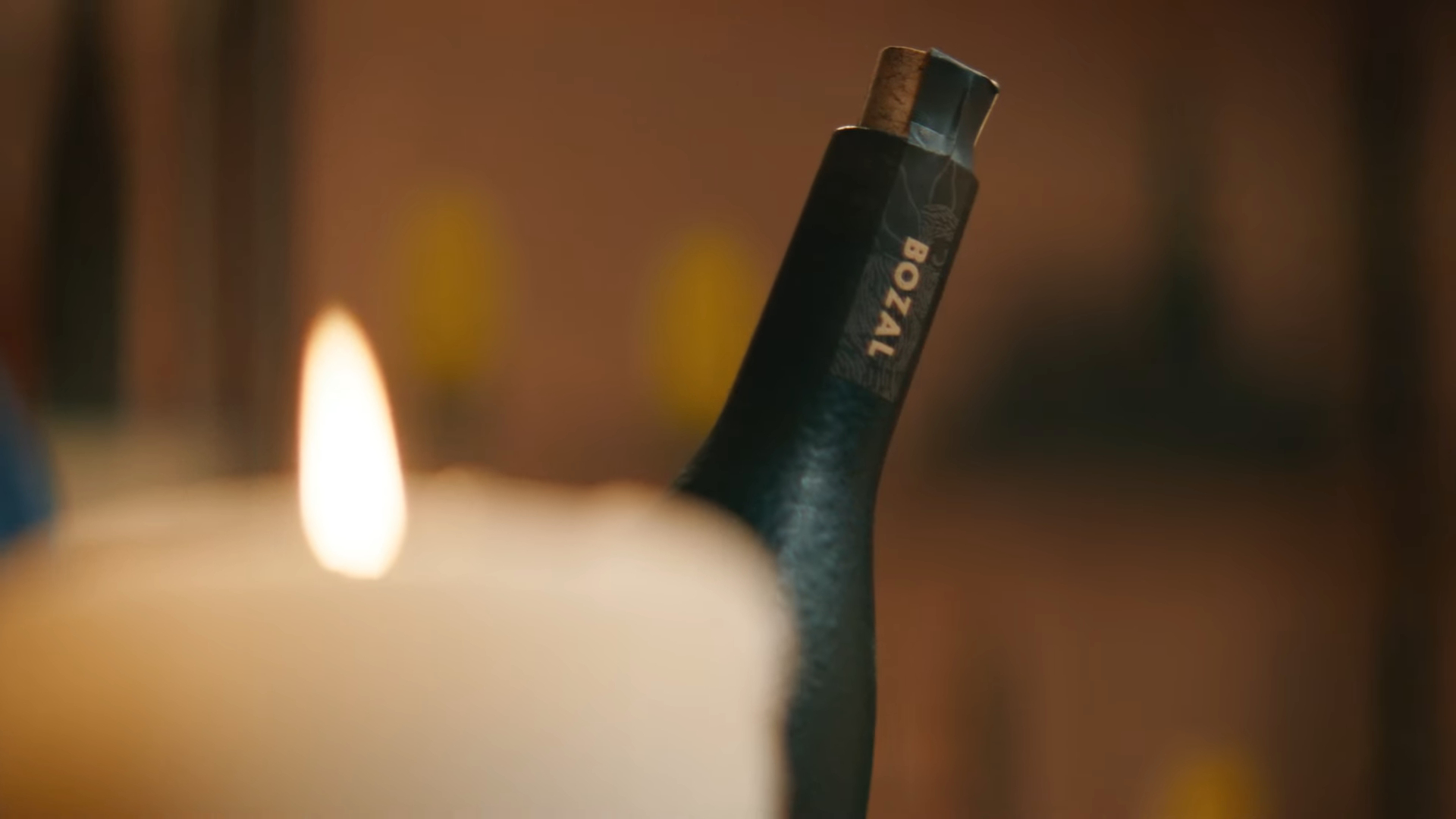
Types of Bozal Mezcal
Now let’s address different bozal mezcal types.
1. Bozal Sacatoro
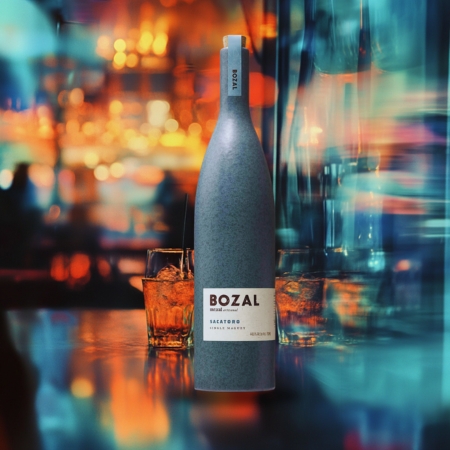
Bozal Sacatoro is crafted in Guerrero from the Sacatoro agave, a subspecies of agave Angustifolia. This varietal thrives on the rugged hillsides of Oaxaca.
- Agave Species: Sacatoro, subspecies of Angustifolia
- Region: Guerrero, Mexico
- Terrain: Grows on steep, uncultivated hillsides
The Sacatoro agave takes between 8 to 12 years to fully mature, making it a rare and carefully cultivated plant. Once harvested, it undergoes traditional mezcal production methods to deliver an exquisite and distinct flavor profile.
2. Bozal Tobala
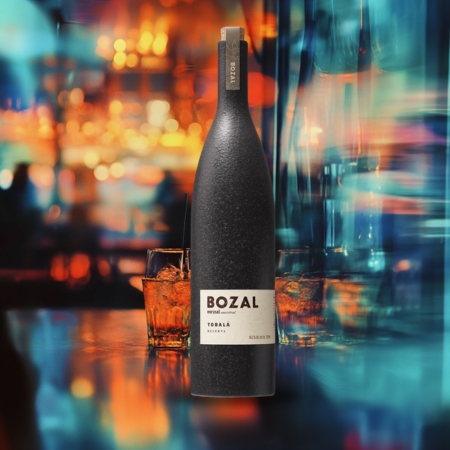
Bozal Tobala is produced in San Juan Bautista Jayacatlán from the rare and highly sought-after maguey Tobala. This variety comes with unique challenges and characteristics:
- Maturity time: The Tobala agave takes 12-15 years to reach full maturity.
- Size: Unlike larger agave species, the Tobala is very small in size.
- Growth method: Tobala can only grow from seed, making its cultivation more labor-intensive.
Due to its small size, producing a single batch of mezcal requires a large number of Tobala plants.
It presents a significant challenge for producers, as it can be difficult to repopulate the plants after harvest, adding to the exclusivity and value of the Tobala variety.
3. Espadin Barril Mexicano Ensamble
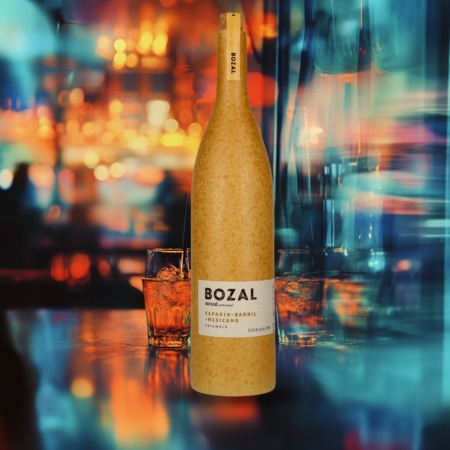
The Espadín Barril Mexicano Ensamble is a blend crafted from three types of agave:
- Espadín – cultivated agave
- Mexicano – wild agave
- Barril – wild agave
The Espadín is planted, while the Mexicano and Barril come from wild agave species. This ensemble delivers a herbaceous undertone that rests at the center of the palate, complemented by a subtle smokiness.
The wild Mexicano adds a viscous, warm finish, amplifying the citrus and floral notes introduced by the Barril.
Tasting Notes:
- Herbaceous undertones
- Subtle smokiness
- Citrus and floral highlights
- Warm, viscous finish
Bozal Espadín Barril Mexicano Ensamble is produced by three different distilleries, each located in traditional mezcal regions:
- Fermin Garcia (Ejutla de Crespo)
- Don Adrian Bautista (San Dionisio Ocotepec)
- Lucio Bautista (San Dionisio Ocotepec)
Together, these mezcaleros use their expertise and wild agave to create a unique, artisanal mezcal with deep character.
4. Bozal Barril
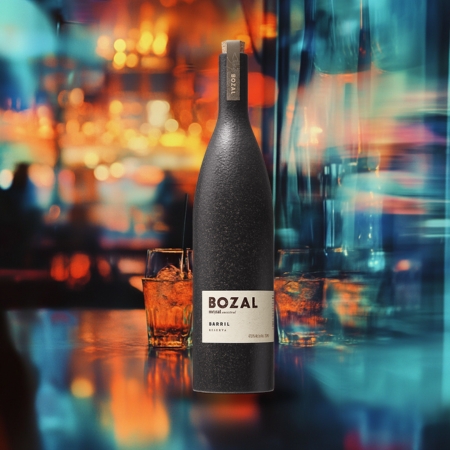
Bozal Barril uses the maguey Barril, also known as agave Karwinskii, which grows in the Santa Catarina Minas region.
This agave is famous for its tall, wide structure and often serves as a living fence, enclosing agricultural fields and livestock.
The region takes pride in its traditional distillation method, using small clay pots that add a unique depth and character to the mezcal.
The maguey Barril enhances the complexity of the mezcal, delivering a rich, lingering finish that is both bold and intricate.
Tasting Notes:
- Nose: Green peppers with a fresh, vegetal aroma.
- Palate: A balanced mix of citrus and creamy banana notes.
- Finish: Citrus and floral undertones, leaving a refreshing and lasting impression.
This distinct combination of flavors makes Bozal Barril a standout mezcal for those who appreciate artisanal craftsmanship and complex flavor profiles.
5. Bozal Ancestral
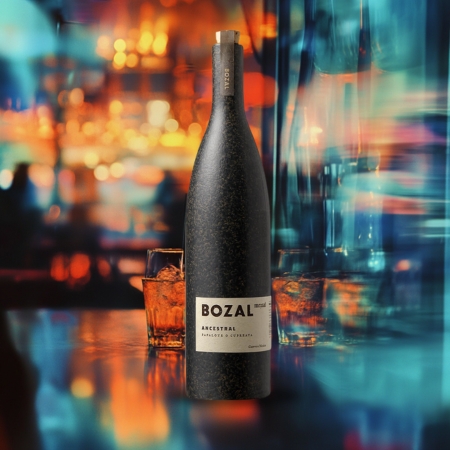
Bozal Ancestral is crafted from wild Cupreata agave, also known as Maguey Papalote, which grows on the rugged slopes of the Rio Balsas basin.
The challenging terrain and high altitudes make harvesting this wild agave particularly difficult, adding to the uniqueness of the mezcal.
- Aroma: Sweet and floral notes that captivate the senses.
- Flavor Profile: Subtle minerality, combined with earthy tones, evokes the fresh scent of wet earth right before a storm.
These elements contribute to the mezcal’s distinctive, nature-driven essence, making it a true reflection of the wild agave and its environment.
6. Bozal Mezcal Borrego
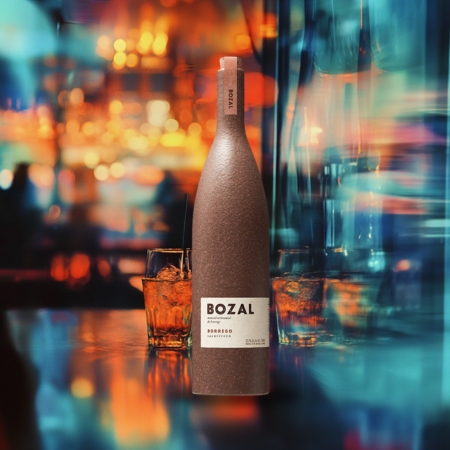
Bozal Mezcal Borrego is crafted from wild maguey Castilla, a close relative of maguey Espadin.
What sets this mezcal apart is its second distillation process, which involves suspending a leg of lamb, seasonal grains, and wild fruits inside a basket at the bottom of the still.
It imparts a distinctive flavor profile to the mezcal.
- Wild fruits: Strawberries, pineapple, and apples
- Additional ingredients: Ginger and pecans
The result is a mezcal with a rich, fruity, herbaceous, and citrus-forward flavor.
- Finish: Smooth with subtle notes of smoked lamb, creating a layered and memorable tasting experience.
7. Bozal Tobasiche
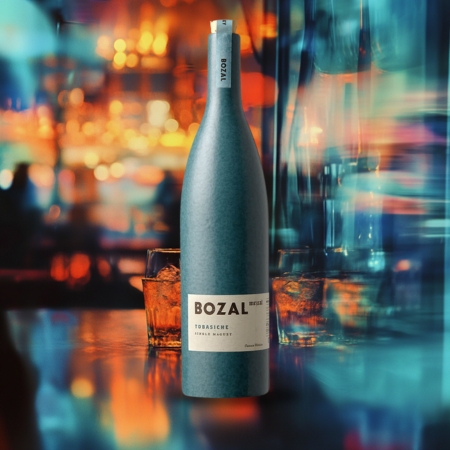
Bozal Tobasiche is made from wild Maguey Tobasiche, a member of the Karwinskii agave family. A variety requires around 12-13 years to reach full maturity, contributing to its distinctive characteristics.
- Aroma: High minerality with sweet notes of anise and botanicals
- Flavor Profile: Cedar-like, herbaceous tones
This mezcal offers a complex experience, blending earthy, woody flavors with a refreshing herbal finish.
The extended maturation process allows the agave to develop rich, nuanced layers, making Bozal Tobasiche a standout for those who appreciate artisanal mezcal with a strong character.
8. Bozal Cuixe
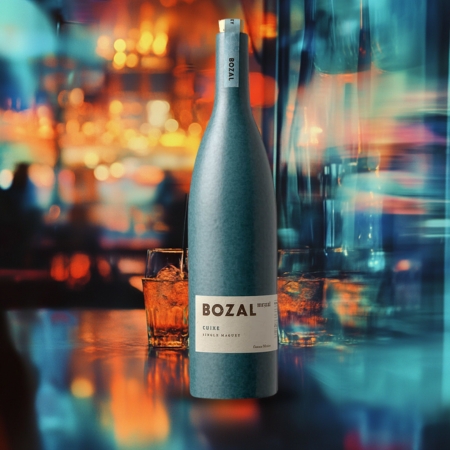
Bozal Cuixe is made from wild maguey Cuixe, found in San Luis Amatlán. This agave variety has an unusual structure, featuring a firmer piña, which makes the harvesting and production process more challenging.
- Aroma: Intense citrus notes combined with strong minerality.
- Palate: Dry with a distinct earthy finish.
The wild nature of the maguey Cuixe and the difficulty of working with this agave contribute to the character of this mezcal, offering a bold and complex tasting experience for mezcal enthusiasts.
9. Bozal Castilla

Bozal Castilla is made from maguey Castilla, also known as agave Angustifolia. It offers a unique combination of flavors and aromas, making it a standout in the Bozal lineup.
- Aroma: A blend of fresh fruit and wet earth creates an inviting and natural scent.
On the palate, you’ll notice a slight sweetness that balances the earthier flavors, providing a well-rounded tasting experience.
- Flavors: The distinct notes of roasted agave are complemented by hints of fresh mint and mocha, adding depth and complexity to each sip.
- Finish: The finish is smooth with a subtle smokiness, leaving a lasting impression without overpowering the senses.
10. Bozal Chino Verde
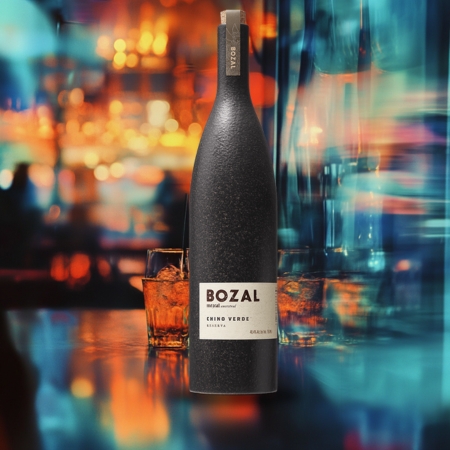
Bozal Chino Verde uses the wild and rare maguey Chino Verde, a subspecies of the Karwinskii agave family.
It thrives in the remote Sierra Madre del Sur mountains, growing naturally in its untamed environment.
The Chino Verde agave grows vertically, with a tall stalk and leaves that fan out at the top, giving it a distinct appearance.
In some communities, people call this plant agave Verde, emphasizing its characteristics within the region.
Bozal Chino Verde mezcal delivers a special experience, as it comes from this hard-to-find agave, offering a rare and wild flavor in every sip.
11. Bozal Pechuga
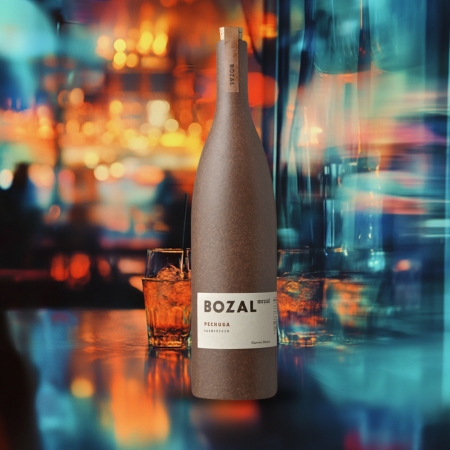
Bozal Pechuga stands out as a distinctive mezcal, made from the Cupreata agave, which grows natively in Mazatlán, Guerrero.
Its production process sets it apart from other varieties.
The process starts with the second distillation, when mezcaleros introduce a blend of ingredients.
They add a cooked chicken, along with a mixture of locally sourced fruits and spices, including:
- Clove
- Raisins
- Citrus fruits
- Cinnamon
- Chiles
These ingredients are allowed to marinate, infusing the mezcal with rich, complex flavors. Once the marination is complete, the mezcal is further refined through a third and fourth distillation.
12. Bozal Tepeztate
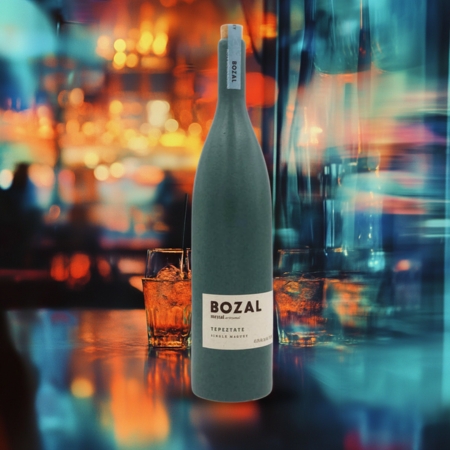
Bozal Tepeztate is made from the rare agave Tepeztate, also known as Marmorata. This variety thrives in the rugged landscape of Oaxaca, particularly in the region of Santa Ana del Rio.
Its distinct, irregularly shaped leaves are a testament to its adaptability, flourishing on the steep, rocky cliffs of the area.
- Aroma: Herbaceous
- Hints:
- Wet stone
- Pine
- Orange flower
- Grapefruit zest
The combination of these complex aromas gives Bozal Tepeztate a refreshing and earthy profile, making it a standout among mezcal enthusiasts. The wild, untamed nature of the agave shines through in every sip.
13. Bozal Ibérico
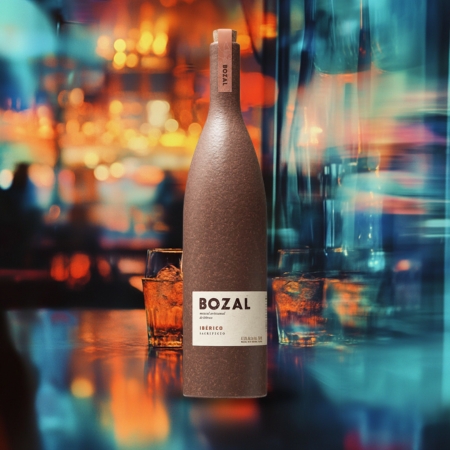
Bozal Ibérico blends Maguey Espadín, Tobasiche, and Mexicano agave, all sourced from the Rio de Ejutla region in Oaxaca.
The mezcaleros craft it in small batches, traditionally reserving it for festivals and ceremonial events.
- Agave Varietals: Espadín, Tobasiche, and Mexicano.
- Region: Rio de Ejutla, Oaxaca.
- Traditional Use: Made in small quantities for ceremonial and festival purposes.
Bozal Ibérico develops its unique character during the second distillation.
In this process, mezcaleros hang seasoned pork or ham above the still, allowing the mezcal to absorb savory notes.
They also add aromatic spices, herbs, and seasonal fruits to enhance the complexity of flavors in the final product.
14. Bozal Cenizo
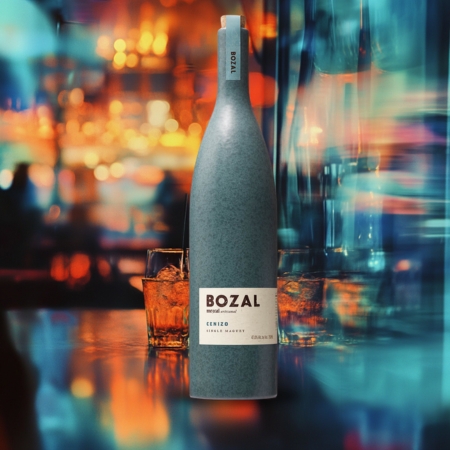
Bozal Cenizo is made from Maguey Cenizo, a wild agave variety also known as Agave Durangensis.
It is native to the Durango region, where it thrives in the rugged, arid landscape.
After harvest, the agave undergoes fermentation in open-air tanks, allowing the environment to influence the flavor.
Once fermented, the agave is distilled twice, a traditional process that enhances and refines the final product’s complexity.
Bozal Cenizo’s production method preserves the artisanal character of the mezcal, resulting in a spirit that embodies the wild, untamed essence of its agave source.
15. Bozal Jabali

Bozal Jabali uses the rare Maguey Jabali agave, sourced from the small community of Sola de Vega in Oaxaca.
Mezcaleros cook the agave in traditional underground pit ovens, which infuse it with rich, smoky flavors.
After cooking, they hand-crush the Jabali agave, a labor-intensive process that preserves its natural flavors and textures.
Once the fermentation process finishes, they distill the mezcal in small, traditional clay pots, maintaining the artisanal quality of the spirit.
16. Bozal Madrecuishe
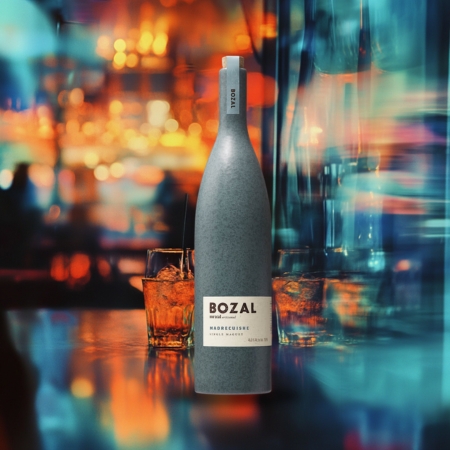
Bozal Madrecuishe uses Maguey Madrecuishe, also known as Agave Karwinskii.
After fermentation, the mezcaleros distill both the agave juices and fibers in copper pots, preserving the rich, complex flavors of the agave.
- Aromas: Ripe jalapeño, cocoa, and floral notes blend to create a distinctive and aromatic experience.
- Flavors: Earthy tones of beet and sweet potato take center stage, offering a grounded and natural profile.
- Hints: Subtle mineral undertones and delicate hints of pollen add an extra layer of complexity.
The Bottom Line
Each bottle of Bozal Mezcal is a tribute to Mexico’s mezcal-making history, offering an experience filled with complex, exotic flavors and earthy undertones that capture the essence of the agave plant.
What sets Bozal apart is its commitment to preserving untamed, traditional techniques while ensuring a high-quality, small-batch production process.
The agave species used in their mezcal grow naturally on steep hillsides, and these wild plants create a unique flavor profile, exotic, earthy, smoky, and rich, that mezcal enthusiasts have come to love.
Bozal’s distinctive bottles, designed by Swig, not only honor the traditional ways of drinking mezcal but also represent the brand’s dedication to craftsmanship from start to finish.

